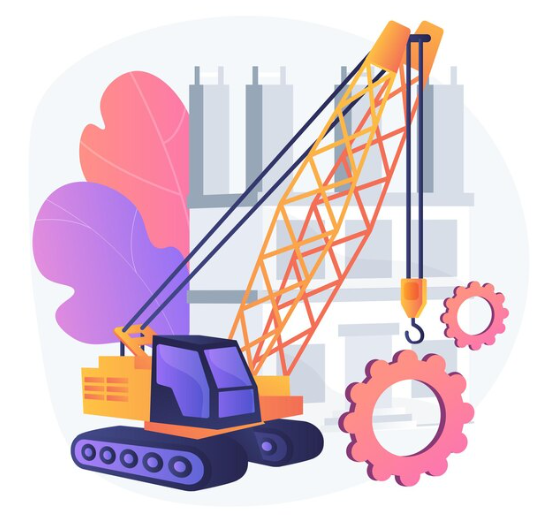Welcome to our blog looking into the details of crane maintenance and servicing. As the backbone of construction and heavy industry, cranes play a pivotal role in numerous projects across the nation. Understanding their maintenance is not just about ensuring smooth operations but also about guaranteeing safety and efficiency on site. Our guide article on crane servicing tailors to engineers, technicians, construction professionals, and crane enthusiasts, offering a wealth of information ranging from basic maintenance tips to in-depth guides on complex servicing procedures.
The Crane Servicing Guide can be used as your go-to source for reliable, comprehensive, and up-to-date information. Join our community and elevate your knowledge of crane maintenance and safety. Read on to learn more!
Guidelines for Crane Servicing
The table in our article outlines the essential aspects of crane servicing and maintenance, providing a clear guideline for ensuring optimal operation and safety.
| Topic | Key Points | Recommended Actions |
|---|---|---|
| Crane Maintenance | Regular inspection and maintenance are crucial for safety and efficiency. | conduct pre-shift and ongoing inspections. |
| Third-party inspections ensure accurate results and compliance with legal obligations. | Establish a system for timely legal compliance inspections. | |
| Preventive maintenance programmes detect issues early and aid in decision-making. | Implement and follow a preventive maintenance programme. | |
| General maintenance includes checking for damage and ensuring all parts are functional. | Regularly inspect for damage and maintain part functionality. | |
| Crane Parts | Booms, hooks, hoists, and crane scales are essential components. | Understand and regularly check each component. |
| Regular calibration and post-repair testing of crane scales are necessary. | Calibrate scales regularly and test after repairs. | |
| Crane Safety | Unmaintained cranes are a safety hazard and can disrupt operations. | Adhere to maintenance schedules to avoid safety hazards. |
| Regular inspections help comply with local and state standards and identify necessary repairs. | conduct regular inspections to meet legal requirements. | |
| Crane Inspection | Inspections should assess both physical condition and regulatory compliance. | Schedule both daily and in-depth annual inspections. |
| Daily safety regimen checklists are crucial for early issue detection. | Implement a daily inspection checklist for operators. | |
| Annual inspections by external inspectors are essential for safety. | Arrange for annual detailed inspections by qualified inspectors. | |
| Mobile cranes require additional checks on tyres, braking systems, and bodywork. | Regularly inspect mobile cranes for road safety. |
Crane Maintenance
Regularly inspecting and maintaining cranes ensures optimal operation when needed, reduces repair time, extends equipment lifespan, and prevents safety concerns that may lead to fines or even operational shutdowns until repairs are completed.
Inspection of cranes should take place prior to each shift and on an ongoing basis as part of their legal obligation to protect workers from health hazards. A third-party qualified inspection service can conduct comprehensive checks that record results accurately. In order to guarantee timely inspections as mandated by law, it is important to establish a proper system of governance.
Cranes are heavy-duty machines prone to malfunctions and breakdowns, yet they still provide businesses with invaluable assistance for getting work done. Without preventive mobile crane maintenance programmes in place, businesses will struggle to detect potential issues quickly enough and make decisions regarding how best to solve them; additionally, this also gives companies a way to determine when it may be time to upgrade to a more modern model.
General maintenance on a crane involves inspecting it for damage and making sure all its parts are in working order, including greasing moving parts, replacing filters, and checking other fluids. An inspection should be conducted by an independent third party with sufficient knowledge and training in this regard.
Maintenance inspections could identify problems, such as when the cable carrier of a crane becomes misaligned and causes premature chain wear and failure. Therefore, it is prudent to check the guide trough regularly for alignment issues as well as sections too narrow for your chain.
Crane inspections should be carried out by highly-trained personnel and documented accurately to protect their integrity and ensure compliance with all relevant regulations. Access to manuals and documentation makes diagnosis easier. Demag offers it for every piece it sells so owners should ensure that their maintenance technicians or inspectors have this material when inspecting or repairing equipment.
Crane Parts

Cranes are essential pieces of equipment in construction projects, yet their complex inner workings make understanding how they operate much simpler. Crane parts such as its boom, hook, and hoist all play important roles in transporting loads safely from point A to point B.
The boom is easily the most recognisable part of any crane. It serves to move heavy objects from one location to another. This piece may be constructed of solid material or have other forms, like lattice booms and hydraulic booms made out of latticed steel; hydraulic models use both cylinders and hydraulic pressure to extend and collapse for transport purposes.
Crane scales are used to measure the weight of loads. Regular calibration and post-repair testing are essential for ensuring accurate readings. In addition, any repairs should also be tested after they’re installed to assess how well they’re functioning.
Like any machine, cranes require regular maintenance in order to operate optimally. Lubrication will help avoid the buildup of contaminants that cause friction between moving parts and reduce their lifespan, as well as daily cleaning to keep them free of dirt or debris that could potentially cause malfunctions.
Spending the time to complete these simple tasks will ensure your crane runs efficiently and cost-effectively, and you will save money in the long run by identifying and correcting minor issues before they escalate into larger problems.
Demag cranes require regular inspections by qualified technicians for optimal operation, both yearly top-to-bottom inspections and quarterly checks for heavy use. Inspections should also be required by most liability insurance providers as a prerequisite for use.
Crane Safety
Unmaintained cranes pose serious safety hazards on job sites and disrupt operations, putting lives and money at risk. Therefore, preventative maintenance is key in order to detect problems before they escalate into bigger issues that require additional resources or take up time and money from operations.
An essential aspect of a successful crane maintenance programme is adhering to local and state inspection standards. Regular inspections help assess equipment for wear and tear and can identify repairs as necessary; additionally, they ensure your company complies with all requirements, which protects you from fines as well as helps avoid unnecessary downtime.
Cranes can be complex pieces of equipment prone to many different issues, which can often be prevented through regular scheduled inspections. Inspections typically include greasing moving parts, changing or replacing fluids as necessary, checking air and hydraulic pressures and lubricating other components, all in order to identify issues before they become major headaches that compromise productivity or could put members of your crew at risk of injury or even death.
The daily inspection of a crane usually involves visual checks of its main frame, cab, boom, and jib for any signs of damage or other problems; checking tyre pressures and monitoring hook status; inspecting chains and wire ropes to identify their condition; as well as evaluating its overall structure. More extensive testing may also be required to detect more serious issues, requiring certified third parties to assess, repair, or recommend replacement solutions.
While cranes are generally designed to be reliable, they can still experience wear and tear over their lifespans. As such, it’s vital that you monitor their lifespan closely in order to balance immediate needs with long-term goals. Repairing or replacing it can both save downtime and extend its lifespan; it is therefore crucial that you fully comprehend the costs and benefits of each option before making a decision.
If you’re searching for ways to reduce downtime on your cranes and increase productivity, Igus offers products designed to help. From lubrication solutions that prevent friction between the sprockets and rollers of your crane to condition monitoring sensors that monitor key parameters and alert operators if they go out of range, we have products to reduce downtime before catastrophic failure occurs.
Crane Inspection
Crane inspections go beyond simply inspecting its physical condition; they also check that your crane conforms to local regulations, so your employees can work safely and efficiently. A crane inspector can also help create a maintenance schedule tailored specifically for your equipment that reduces downtime and increases productivity.
Every crane operator should follow a safety regimen checklist when using their machinery, with daily checks including items such as verifying power and emergency switch operation and environmental hazards in close proximity, as well as testing the brake action of the crane. This practice will help identify potential issues early and prevent them from becoming major incidents. Checklist items could include things like making sure power and emergency switches are activated as required, noting proximity hazards, and testing the brake action of your crane, to name but a few.
Daily inspections should only take five minutes per crane and will save money over time by identifying minor issues before they turn into bigger problems. Furthermore, regular checks will increase its lifespan by detecting wear or tear that could potentially be harmful in the future.
Daily crane inspections may be performed by your employees, while an external inspector should conduct an in-depth annual assessment to make sure your crane is safe for use and detect any issues before they become serious dangers to employees.
Cranes are expensive pieces of machinery that are essential to your operations, so it is vital that they continue working when you need them. A regular maintenance schedule will extend their lifespan.
Mobile cranes are more than just heavy machinery; they’re vehicles. Making time to inspect tyres, braking systems, and bodywork will keep your cranes safer on the roads and extend their lifespan.

A trend analyst who specializes in footwear. She writes about fashion trends, styling advice, and the growing demand for iconic sneaker brands.




